
Biomimetics
Scope & Guideline
Innovating at the Intersection of Biology and Engineering
Introduction
Aims and Scopes
- Biomimetic Engineering Solutions:
The journal showcases research that applies principles observed in nature to develop innovative engineering solutions, including robotics, material science, and structural design. - Interdisciplinary Research:
It encourages collaboration across disciplines such as biology, robotics, materials science, and computer science to foster developments in biomimetic applications. - Sustainable Technologies:
The journal emphasizes the development of sustainable and eco-friendly technologies inspired by nature, aiming to address global challenges such as climate change and resource management. - Advanced Material Development:
Research on the design and characterization of new materials that mimic biological structures, enhancing functionalities for biomedical and engineering applications. - Optimization Algorithms:
The journal includes studies on bio-inspired optimization algorithms that solve complex engineering problems, showcasing their applicability in various fields.
Trending and Emerging
- Soft Robotics:
There is a rising interest in soft robotics inspired by biological systems, emphasizing flexible and adaptable designs that mimic the movements and functionalities of living organisms. - Bioinspired Materials for Healthcare:
Research on biomimetic materials specifically targeting biomedical applications, such as tissue engineering and drug delivery systems, is gaining momentum, reflecting the growing need for advanced healthcare solutions. - Machine Learning and AI Integration:
The incorporation of machine learning and artificial intelligence in biomimetic studies is trending, particularly in optimizing designs and enhancing functionalities based on biological principles. - Sustainable Urban Design:
Emerging themes focus on integrating biomimetic principles into urban planning and architecture, promoting sustainability and resilience in urban environments. - Multiscale Biomimicry:
There is an increasing trend towards exploring biomimicry at multiple scales, from nanoscale materials to large-scale architectural designs, highlighting the versatility of biomimetic approaches.
Declining or Waning
- Traditional Biomimicry Techniques:
There has been a noticeable decrease in publications focused solely on traditional biomimicry methods without integrating advanced technologies, as researchers increasingly seek innovative, hybrid approaches. - Static Material Applications:
Research centered on static applications of biomimetic materials is less frequent, with a growing preference for dynamic and functional materials that can adapt to various environments. - Basic Biological Studies:
Studies purely focused on basic biological research without direct engineering applications have seen a decline, as the journal shifts towards more applied and interdisciplinary projects.
Similar Journals

ENGINEERING OPTIMIZATION
Elevating Standards in Optimization ResearchENGINEERING OPTIMIZATION is a premier academic journal published by Taylor & Francis Ltd that has been at the forefront of the fields of Applied Mathematics, Computer Science Applications, Control and Optimization, Industrial and Manufacturing Engineering, and Management Science and Operations Research since its inception in 1974. With an impressive convergence period extending through 2024 and categorized in the Q2 quartile across various relevant disciplines, this journal is well-regarded for its rigorous peer-reviewed articles that address the latest advancements in optimization methodologies and their applications across industries. With current Scopus rankings placing it in the top percentiles for Applied Mathematics and Control and Optimization, ENGINEERING OPTIMIZATION serves as a vital resource for researchers, professionals, and students alike, dedicated to pushing the boundaries of knowledge and innovation in engineering and related fields. This journal does not offer Open Access; however, it remains accessible through institutional subscriptions and university libraries.
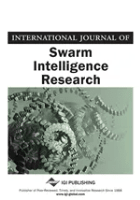
International Journal of Swarm Intelligence Research
Transforming Ideas into Intelligent SolutionsInternational Journal of Swarm Intelligence Research, published by IGI Global, stands at the forefront of research in the dynamic field of artificial intelligence, focusing specifically on swarm intelligence and its applications. With an ISSN of 1947-9263 and an E-ISSN of 1947-9271, this journal has carved a niche within academia since its inception, boasting a commendable Q3 rank in the categories of Artificial Intelligence, Computational Theory and Mathematics, and Computer Science Applications as of 2023. The journal spans vital research from the years 2017 to 2024, fostering an environment that welcomes innovative studies that apply natural systems principles to computational methodologies. Although not classified as Open Access, the journal remains accessible to a broad audience, providing vital insights and fostering discussion among researchers, professionals, and students delving into cutting-edge swarm intelligence topics. As such, this journal is an essential resource for those aiming to advance their understanding and application of these transformative technologies.

Natural Computing
Unlocking Nature's Secrets for Computational AdvancementNatural Computing is a leading peer-reviewed journal published by Springer, focusing on the interdisciplinary study of natural computation methods and their applications across various domains. With an ISSN of 1567-7818 and an E-ISSN of 1572-9796, this journal has established itself as vital in the field of Computer Science Applications, as reflected in its esteemed Q2 quartile ranking and a Scopus rank of #358 among 817 journals, placing it in the 56th percentile. Based in the Netherlands, Natural Computing covers a diverse range of topics, including computational models inspired by natural systems, evolutionary algorithms, and swarm intelligence. Seeking to bridge the gap between theoretical research and practical applications, this journal serves researchers, professionals, and students by providing insights and advancements in the field. With a commitment to fostering innovation, Natural Computing aims to push the boundaries of understanding in computational methods inspired by nature, making it an essential resource for those looking to contribute to and stay updated within this dynamic area.
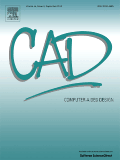
COMPUTER-AIDED DESIGN
Bridging Academia and Industry for Enhanced Design SolutionsCOMPUTER-AIDED DESIGN is a premier journal published by Elsevier Science Ltd, dedicated to the dynamic fields of Computer Graphics and Computer-Aided Design, as well as Industrial and Manufacturing Engineering. With a long-standing history since its inception in 1968, this journal plays a vital role in disseminating high-quality research and innovative methodologies that shape the future of design and engineering practices. It is positioned in the upper quartiles (Q1 and Q2) across multiple categories, highlighting its impact and reputation, with a notable 74th percentile ranking in Computer Graphics and Computer-Aided Design related fields. Researchers, professionals, and students will find valuable insights and advancements that not only push the boundaries of knowledge but also facilitate practical applications in the industry. The journal's emphasis on enhancing collaboration between academia and industry aligns with contemporary trends towards integrated design and manufacturing processes, making it an essential resource for anyone looking to stay at the forefront of technological advancement. Authors are encouraged to submit original articles that contribute to the multidisciplinary discourse within these domains.

Engineering Technology & Applied Science Research
Connecting Researchers to Shape the Future of Applied ScienceEngineering Technology & Applied Science Research is a distinguished open-access journal published by EOS ASSOC based in Greece, focusing on the multifaceted realms of engineering, materials science, and signal processing. Established in 2011, this journal has rapidly gained recognition, achieving a Q2 ranking in Engineering (miscellaneous) and a Q3 ranking in both Materials Science and Signal Processing for 2023, showcasing its growing impact in these critical fields. With an emphasis on disseminating high-quality research and fostering innovation, ETASR provides a platform for researchers, professionals, and students to share their findings and explore emerging technologies. The journal's Scopus rankings further reinforce its significance, positioning it strongly within the top percentiles among its peers. With a commitment to open access, ETASR ensures that research is accessible to a global audience, promoting collaboration and knowledge sharing across disciplines. Whether you are a seasoned researcher or a budding student, ETASR is an invaluable resource for advancing your understanding and contributing to the cutting-edge developments in engineering and applied sciences.
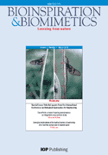
Bioinspiration & Biomimetics
Bridging Biology and Engineering for a Sustainable FutureBioinspiration & Biomimetics is a premier journal published by IOP Publishing Ltd, specializing in the innovative study of biological inspiration across various scientific disciplines. Since its inception in 2006, this journal has been a vital platform for researchers who aim to emulate nature's processes in engineering, biochemistry, and medicine. With an impressive classification in the Q1 and Q2 quartiles across categories such as Biophysics and Engineering as of 2023, it ranks highly within the Scopus database, including a notable 81st percentile ranking in Engineering (miscellaneous). While currently not offered as an open-access publication, Bioinspiration & Biomimetics continues to deepen the understanding of biomimetic applications, encouraging interdisciplinary collaboration and innovative solutions to complex challenges in both academia and industry. Researchers and professionals seeking to drive forward the future of sustainable technologies will find this journal an invaluable resource for the latest advancements and insights in the field.

SmartMat
Elevating Material Science through Cutting-edge Discoveries.SmartMat is a cutting-edge, peer-reviewed academic journal published by WILEY, dedicated to the fields of Chemistry, Materials Science, and Mechanics of Materials. Launched in 2020, this Open Access journal aims to disseminate high-quality research and innovative findings that bridge these interdisciplinary areas. With an impressive impact factor reflecting its strong scholarly influence, SmartMat currently holds the prestigious Q1 category ranking in key domains such as Chemistry (miscellaneous), Materials Science (miscellaneous), and Mechanics of Materials, underscoring its relevance and importance in advancing material research. The journal is ranked among the top in its fields on Scopus, with 98th and 97th percentiles for Engineering and Chemistry rankings, respectively. Researchers, professionals, and students looking for a platform to share advancements in smart materials and their applications are encouraged to explore the wide-ranging access options available, enhancing visibility and engagement with global scientific communities.

JOHNS HOPKINS APL TECHNICAL DIGEST
Bridging Disciplines to Enhance Technological AdvancementsJohns Hopkins APL Technical Digest is a prominent journal published by the Johns Hopkins University Applied Physics Laboratory LLC, focusing on interdisciplinary research and advances in engineering and applied physics. With its inception in 1981, the journal serves as a platform for disseminating critical advancements in technology and applied sciences, appealing to researchers, professionals, and students alike. The journal is known for its rigorous peer-review process and commitment to quality, reflected in its Scopus rankings, which place it within the lower quartiles of both Engineering and Physics fields. Although currently not an Open Access publication, its valuable insights into the applications of physics and engineering continue to benefit the academic community. By fostering discussions and sharing innovations, the Johns Hopkins APL Technical Digest significantly contributes to the advancement of science and technology, making it a key resource for those in the field.
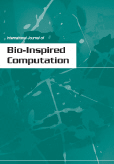
International Journal of Bio-Inspired Computation
Advancing the Frontiers of Bio-Inspired ComputingInternational Journal of Bio-Inspired Computation, published by INDERSCIENCE ENTERPRISES LTD, is a leading platform dedicated to advancing research in the fields of bio-inspired computing and its applications. With a robust ISSN of 1758-0366 and E-ISSN of 1758-0374, this journal contributes significantly to the discourse in Computer Science, particularly emphasizing theoretical and practical frameworks that mirror natural processes. Situated in Switzerland, this peer-reviewed journal operates under a rigorous editorial process, ensuring high-quality publications that attract considerable attention, as evidenced by its placement in the Q2 category for 2023 in General Computer Science and Q3 in Theoretical Computer Science. With Scopus rankings reflecting its growing influence—ranked #62 out of 232 in General Computer Science and #36 out of 130 in Theoretical Computer Science—this journal invites researchers, professionals, and students to explore innovative methodologies and development in bio-inspired technologies. Although it currently does not adopt an open-access model, the journal remains committed to disseminating vital research that fuels advancements in computational intelligence, fostering collaboration and knowledge exchange in the ever-evolving landscape of computing.
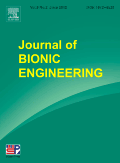
Journal of Bionic Engineering
Pioneering Discoveries in Bioengineering and BeyondJournal of Bionic Engineering is a prominent publication in the field of bioengineering, biophysics, and biotechnology, published by Springer Singapore Pte Ltd. Since its inception in 2006, this journal has provided a vital platform for researchers and professionals to disseminate groundbreaking work and innovative approaches in the rapidly evolving realm of bionic systems and biomimetic technologies. With an impact factor that reflects its quality and relevance, it is currently positioned in the Q2 quartile across several key categories, underscoring its substantial influence in academia. The journal is indexed in Scopus, where it ranks competitively in biochemistry, genetics, molecular biology, and chemical engineering, showcasing its appeal to a broad spectrum of scientific disciplines. Although it does not offer open access, it remains a critical resource for those engaged in advanced research and development, fostering connections among scholars, practitioners, and educators dedicated to pushing the boundaries of bionic engineering. As the journal continues to converge from 2006 to 2024, it aims to uphold its mission of promoting interdisciplinary research that contributes to the understanding and application of bionic technologies in solving real-world challenges.